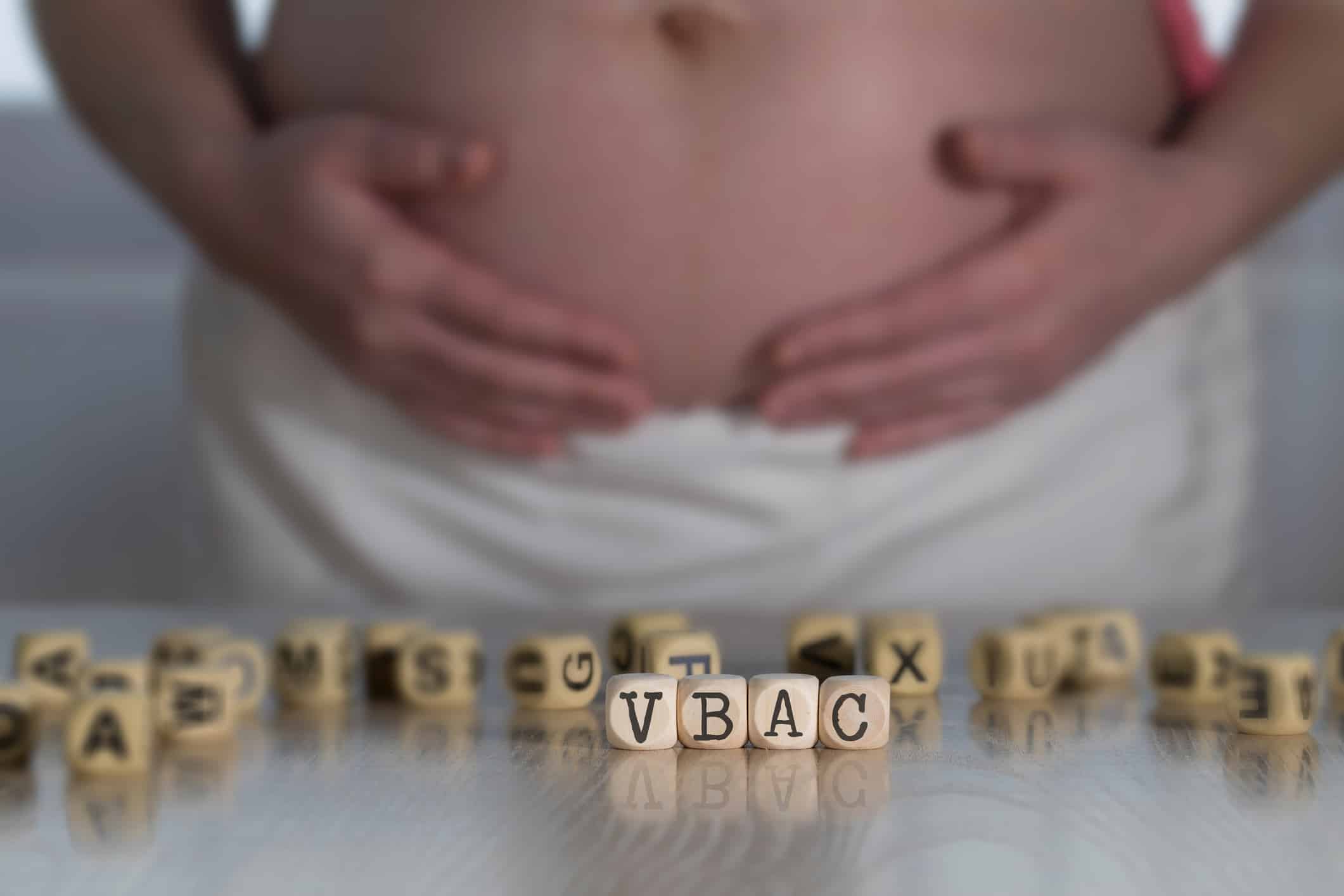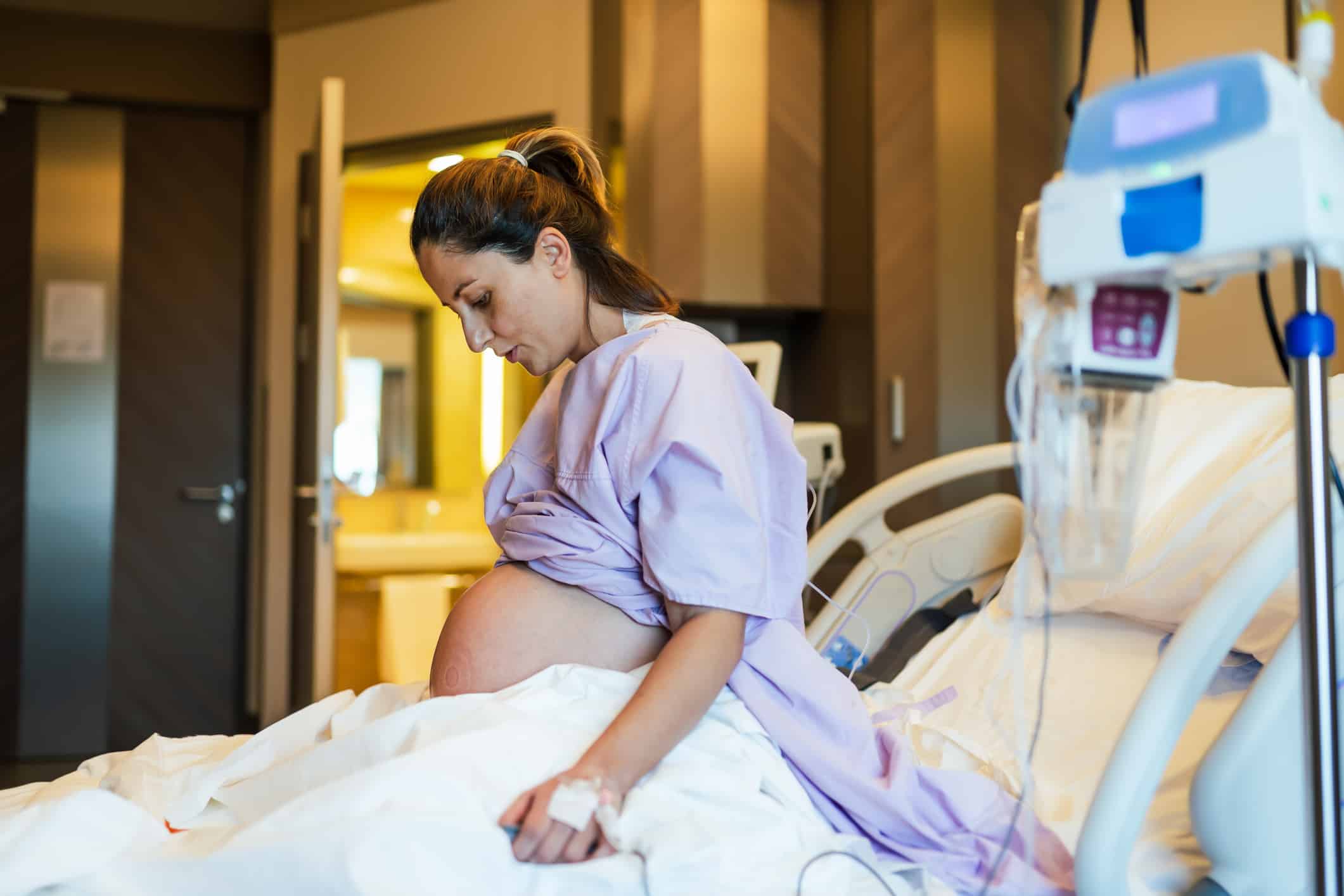For many women, the decision to pursue a VBAC stems from a desire to experience a vaginal delivery and avoid the risks associated with multiple cesarean sections. Whether you're exploring your options for the first time or have questions about your eligibility, understanding the process, benefits, and potential risks can help you make an informed choice.
At Craig Ranch OB/GYN in McKinney, Texas, our board-certified physicians and certified nurse midwives help women navigate their birthing options with great care. With over 50 years of combined experience and a strong history of successful VBAC deliveries, we’ll support your goals for a safe and fulfilling birth experience.
What Is A VBAC?
VBAC is the term used to describe a vaginal birth after cesarean delivery. Many women who have had a cesarean section previously can attempt to deliver vaginally in subsequent deliveries. VBAC allows a woman to have the experience of a vaginal delivery if she wants.
It also may decrease the risk of certain health problems related to multiple cesarean deliveries, such as bladder or bowel injury or placenta problems in the following pregnancies.

If you and your obstetrician agree that you are a good candidate for a VBAC, you will have a trial of labor after cesarean (TOLAC). This means that you will labor normally as if you were going to deliver vaginally. As can happen in any labor, however, there is still a chance that a cesarean delivery will be necessary. According to studies, approximately 75% of women who attempt VBAC are successful.
Candidates for Vaginal Birth After a C-Section
Approximately 90% of women who have had previous cesarean section deliveries are good candidates for VBAC. Evidence supports that VBAC can be successful in the right situations.
Some of the characteristics that doctors prefer include:
- The current pregnancy is healthy and has no risks.
- Previous successful vaginal delivery, even before a prior C-section.
- Age younger than 35 years. Studies show that women younger than 35 years of age have more successful VBAC deliveries.
- Previous C-section used a low-transverse incision. This side-to-side incision is least likely to rupture during VBAC.
- Two or fewer C-sections occurred before the VBAC.
- The reason for C-section was to protect the baby’s health, not the mother’s.
- There are no uterine anomalies.
- Baby is head down.
Who Is Not a Candidate for a VBAC?
VBAC may not be appropriate in certain situations, such as:
- Advanced maternal age.
- Large fetus size.
- The previous C-section had a high vertical incision.
- Prior uterine rupture.
- Previous uterine surgery, such as removal of uterine fibroids.
- Mother is pregnant with multiple fetuses.
Candidates can contact our McKinney, TX, office if they meet the appropriate requirements.
How to Prepare for a Vaginal Birth After a C-Section
Women who are pregnant and interested in VBAC are encouraged to talk to their obstetrician about their preferences at their initial prenatal visit. This fosters discussion regarding expectations, concerns, and flexibility within the birth plan from the onset of care. The current healthcare provider needs to have a thorough medical history, including the type of cesarean section that was previously performed.
In addition to maintaining open communication with your obstetrician throughout your pregnancy, you can:
- Take a VBAC childbirth class or otherwise learn more about this delivery experience.
- Arrange the VBAC delivery to take place at a hospital or other setting that is fully capable and supportive of this choice.
- Enter labor naturally rather than through induction.
- Work with a doula or midwife who is experienced in VBAC deliveries.
- Manage your expectations. A trial of labor after a cesarean may result in a cesarean section. Parents should balance their intentions of VBAC with the possibility of complications such as fetal position or umbilical cord wrapping leading to emergency surgery.
Benefits of VBAC
There are a number of reasons, including wanting to experience a vaginal delivery, for a patient to choose VBAC. Other advantages of VBAC over C-section may include:
- No abdominal surgery
- Shorter recovery period
- Fewer complications
- Less risk of infection
- Less blood loss

VBAC also benefits a woman who is planning to have several children. A woman who has undergone multiple C-sections may not be a good candidate for vaginal delivery because she has a greater chance of complications. However, a woman who has delivered only one child by C-section experiences fewer risks with each successive vaginal birth.
What Criteria Must I Meet to Be Considered for Vaginal Birth After Cesarean?

Your doctor's primary objective in scheduling your VBAC is to keep you and your child safe. If you are interested in a VBAC delivery, your doctor will perform a thorough review of your medical history and previous pregnancies and deliveries.
The following are standard guidelines that are followed in this process:
- You've not had more than two low transverse C-sections in the past.
- You've not had uterine surgery that has left scarring.
- Your uterus is free of anomalies and previous ruptures.
- You are in good overall health and have no significant medical concerns.
- Your current pregnancy does not have the same characteristics that led to your previous C-section.
- Your baby is positioned head-down and is normal size.
Your doctor will be even more pleased if you have had a vaginal birth prior to your cesarean section and you choose a healthcare provider and birthing location in which a C-section can be performed without delay if need be.
Why Choose Craig Ranch OB/GYN?
Since 2000, Craig Ranch OB/GYN in McKinney, Texas, has been a trusted leader in women’s healthcare. Our team of board-certified physicians, certified nurse midwives, and a nurse practitioner brings over 50 years of combined experience. With more than 5,000 successful deliveries, including VBAC and twin births, we provide advanced surgical options and in-office procedures like mammography and endometrial ablations.
Our office prioritizes safety, convenience, and patient-centered care. Delivering at both Baylor Scott & White McKinney and Medical City of McKinney, we also support natural birthing experiences through our midwife services. Whether managing high-risk pregnancies, addressing gynecological concerns, or offering routine checkups, Craig Ranch OB/GYN always provides exceptional care.
Frequently Asked Questions
It is advised that women wait at least 18 months to attempt VBAC. Doing so can decrease the chances of uterine rupture.
Many women who have previously had a C-section express interest in VBAC. This interest may be prompted by very personal reasons, which can differ from one woman to another. You may want to know what it's like to go through a vaginal delivery if you had planned on this before but didn't get to experience it.
Having a C-section can be difficult emotionally, too. VBAC could provide the opportunity to not only have the experience of a vaginal birth but also to regain the knowledge that the body can work as nature intended. Aside from the emotional reasons women choose to have VBAC, there are clinical advantages, as well.
The VBAC comes with its own risks and benefits. The vaginal delivery does not incur any surgical risks, and it has a shorter recovery period. You may be able to go home from the hospital days sooner than you would after another C-section.
Generally, there is less of a risk of excessive blood loss after vaginal birth, and the risk of placental problems is lower after VBAC and subsequent C-sections. This birth process is also good for the baby, helping to clear their lungs as they pass through the birth canal.
Your doctor will consider several factors when planning your birth with you. VBAC may be appropriate if there are no significant risk factors that could make the process unsafe.
Reasons your doctor may advise against VBAC include:
- Your uterus has ruptured previously.
- You have scars on your uterus.
- You have active genital herpes.
- You have placenta previa.
- The baby is breech.
- Your uterine incision from a previous C-section is positioned in a way that is likely to break open under stress.
During your consultation for prenatal care, as you engage in a discussion with your doctor about your birth plan, you can ask all of the questions you have. Based on your health, medical history, and other factors, your doctor may deem it safer to plan another cesarean section.
Vaginal birth after C-section carries a small risk of uterine rupture at the C-section incision, depending on where the incision was made. A woman who has had a previous C-section with a high vertical incision, which is made down the length of the uterus, may not be eligible for VBAC because this type of incision is more likely to rupture.
VBAC is considered safe for a woman who has had a C-section with a low transverse incision, which is made across the side of the uterus. The majority of C-section deliveries use this type of incision.
The American Congress of Obstetricians and Gynecologists (ACOG) considers VBAC not only acceptable for women who have had a previous cesarean birth but also the safest option for delivery. This stance applies to women who have had one or two cesarean sections before attempting VBAC and who also meet additional criteria for a safe, successful vaginal delivery.
VBAC may not be the best method of delivery if the baby is particularly large or more than one baby is being carried. VBAC has a higher success rate if labor occurs naturally, before or on the due date. However, if the pregnancy goes past the due date, the success rate begins to drop. Other factors that should be considered before VBAC may include:
- Number of previous C-sections
- Prior uterine rupture
- Other pregnancy-related problems
A patient who opts for VBAC needs to remain flexible when it is time for labor and delivery. In most cases, the vaginal birth will proceed as planned, but there are situations that can arise during labor that might increase the risk of complications in a vaginal delivery for the patient or baby. If that occurs, the patient should be prepared to follow the advice of her medical team on how to proceed with delivery.
One of the benefits of VBAC delivery is that the recovery from this experience is shorter and easier than cesarean birth. Most patients can go home within a few days, if not the day after their delivery, depending on the particulars of their birth event (episiotomy or complications). The overall recovery from VBAC is very similar to that of a primary vaginal delivery. Patients are much more capable of resuming light activity within days of their child’s birth.
Choosing a VBAC can positively influence future pregnancies by reducing the risks associated with multiple cesarean sections. Women who have several C-sections are more likely to experience complications like placenta previa, placenta accreta, or uterine rupture in subsequent pregnancies.
A successful VBAC avoids additional uterine scarring, which can improve outcomes for both mother and baby in the long term. However, it’s important to have open discussions with your doctor about your family planning goals and how VBAC might fit into those plans.
Midwives and doulas play an important role in supporting women during VBAC. Certified nurse midwives can oversee VBAC deliveries in low-risk situations, offering a more personalized and holistic approach to childbirth. Doulas, while not medical professionals, provide emotional and physical support throughout labor, helping women manage pain, stay focused, and feel empowered during the process.
Both can work alongside obstetricians to ensure you have the resources and encouragement needed for a positive VBAC experience.
Women attempting VBAC have access to the same pain management options as those delivering vaginally for the first time. These include:
- Epidurals: A common choice for significant pain relief during labor.
- Nitrous Oxide: A safe, mild sedative that helps manage pain and anxiety.
- IV Medications: Short-term relief during early labor.
- Non-Medical Options: Breathing techniques, hydrotherapy (laboring in water), massage, and movement can help reduce discomfort naturally.
Your care team will work with you to develop a pain management plan that aligns with your preferences and medical needs. It’s important to keep in mind that pain management during VBAC remains flexible and can adapt as labor progresses.
What Our Patients Have To Say
"So happy to be cared for by Craig Ranch OB/GYN. They educate you and advocate for you. The doctors and nurse practitioners are excellent and never rush you! No where else I’d ever go and I’ll continue to refer others for their great care."
Schedule a Consultation
To schedule your consultation at our McKinney, TX, office, call 214.544.6600. The providers at Craig Ranch OB/GYN are proud to serve patients in McKinney and the surrounding areas of Texas.
